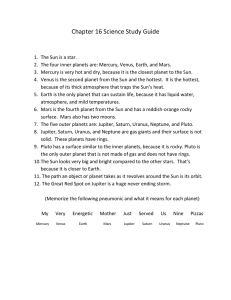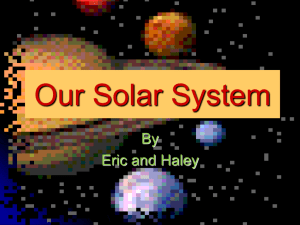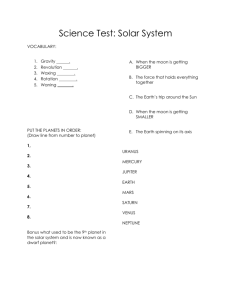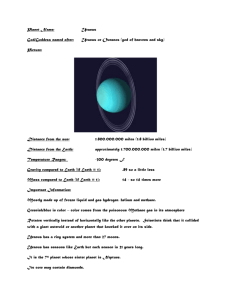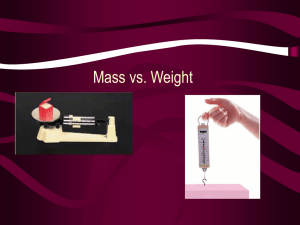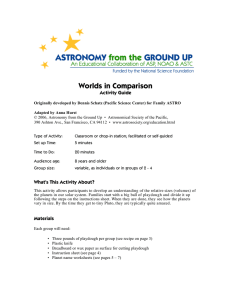Click Here for Worlds in Comparison Lab Outline
advertisement
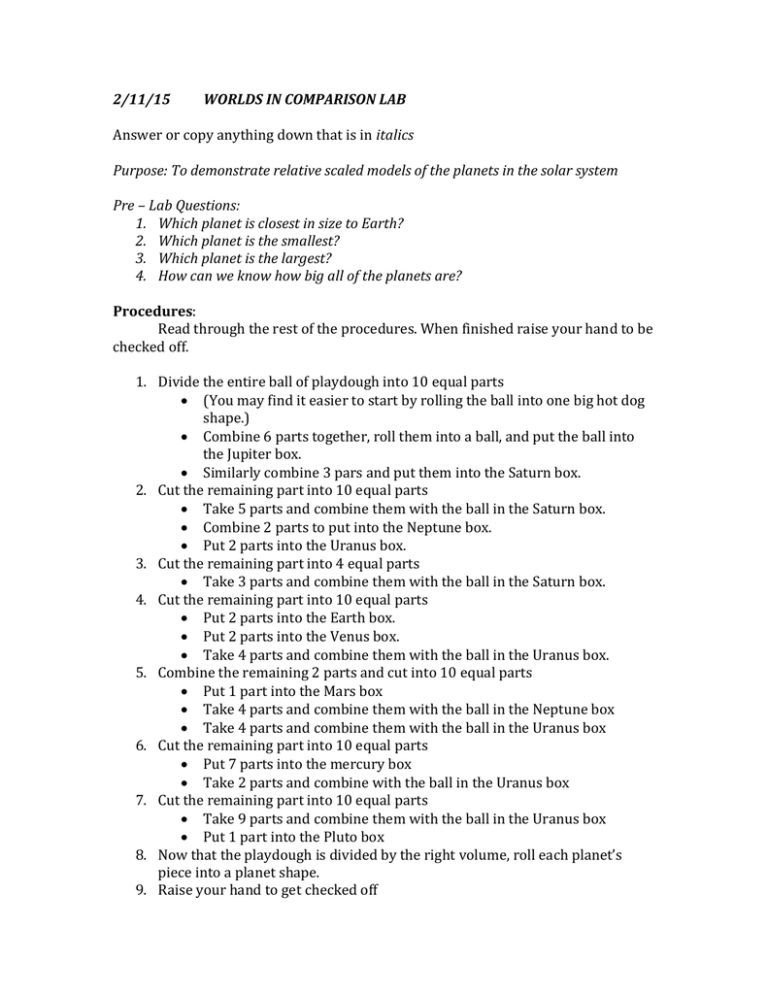
2/11/15 WORLDS IN COMPARISON LAB Answer or copy anything down that is in italics Purpose: To demonstrate relative scaled models of the planets in the solar system Pre – Lab Questions: 1. Which planet is closest in size to Earth? 2. Which planet is the smallest? 3. Which planet is the largest? 4. How can we know how big all of the planets are? Procedures: Read through the rest of the procedures. When finished raise your hand to be checked off. 1. Divide the entire ball of playdough into 10 equal parts (You may find it easier to start by rolling the ball into one big hot dog shape.) Combine 6 parts together, roll them into a ball, and put the ball into the Jupiter box. Similarly combine 3 pars and put them into the Saturn box. 2. Cut the remaining part into 10 equal parts Take 5 parts and combine them with the ball in the Saturn box. Combine 2 parts to put into the Neptune box. Put 2 parts into the Uranus box. 3. Cut the remaining part into 4 equal parts Take 3 parts and combine them with the ball in the Saturn box. 4. Cut the remaining part into 10 equal parts Put 2 parts into the Earth box. Put 2 parts into the Venus box. Take 4 parts and combine them with the ball in the Uranus box. 5. Combine the remaining 2 parts and cut into 10 equal parts Put 1 part into the Mars box Take 4 parts and combine them with the ball in the Neptune box Take 4 parts and combine them with the ball in the Uranus box 6. Cut the remaining part into 10 equal parts Put 7 parts into the mercury box Take 2 parts and combine with the ball in the Uranus box 7. Cut the remaining part into 10 equal parts Take 9 parts and combine them with the ball in the Uranus box Put 1 part into the Pluto box 8. Now that the playdough is divided by the right volume, roll each planet’s piece into a planet shape. 9. Raise your hand to get checked off Post Lab: 1. Create a data table in your lab book with by writing the name of the planet, it’s relative volume and then trace the playdough ball. a. EX: PLANET NAME VOLUME (x109 km3) Mercury 61 Venus 928 Earth 1,083 Mars 163 Jupiter 1,431,280 Saturn 827,130 Uranus 68,340 Neptune 62,540 Pluto (dwarf planet) 7 (Moon) – cut mercury into 3 parts and one of those will represent the moon 22 MODEL SIZE 2. What were two things you did not expect to observe from the activity? 3. Are most models accurately depicting the size relationship between all of the planets? Why or why not? When finished, clean up all of the playdough and return it to the bag. Return all playdough to the front table.

